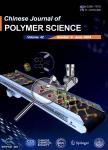Fabrication of Cu(OH)_2 Nanowires Blended Poly(vinylidene fluoride) Ultrafiltration Membranes for Oil-Water Separation
Fabrication of Cu(OH)_2 Nanowires Blended Poly(vinylidene fluoride) Ultrafiltration Membranes for Oil-Water Separation作者机构:School of Chemical Engineering Northwest University The State Key Laboratory of Chemical Engineering Department of Chemical Engineering Tsinghua University
出 版 物:《Chinese Journal of Polymer Science》 (高分子科学(英文版))
年 卷 期:2018年第36卷第5期
页 面:612-619页
核心收录:
学科分类:080706[工学-化工过程机械] 0817[工学-化学工程与技术] 08[工学] 0807[工学-动力工程及工程热物理] 0805[工学-材料科学与工程(可授工学、理学学位)] 0703[理学-化学]
基 金:financially supported by the Postdoctoral Science Foundation of China (No.2014M560802) the Natural Science Foundation of Education Department of Shaanxi Provincial Government (No.16JK1755) the State Key Laboratory of Chemical Engineering (No.SKL-ChE-16A04)
主 题:Cu(OH)2 nanowires PVDF UF membrane Oil Water emulsion separation
摘 要:Cu(OH)2 nanowires were prepared and incorporated into poly(vinylidene fluoride)(PVDF) to fabricate Cu(OH)2-PVDF ultrafiltration(UF) membrane via immersion precipitation phase inversion process. The effect of Cu(OH)2 nanowires on the morphology of membranes was investigated by X-ray photoelectron spectroscopy(XPS), Fourier transform infrared(FTIR) spectroscopy, atomic force microscopy(AFM), scanning electron microscopy(SEM) and X-ray diffraction(XRD) measurements. The results showed that all the Cu(OH)2-PVDF membranes had wider fingerlike pore structure and better hydrophilicity, smoother surface than pristine PVDF membrane due to the incorporation of Cu(OH)2 nanowires. In addition, water flux and bovine serum albumin(BSA) rejection were also measured to investigate the filtration performance of membranes. The results indicated that all the Cu(OH)2-PVDF membranes had high water flux, outstanding BSA rejection and excellent antifouling properties. It is worth mentioning that the optimized performance could be obtained when the Cu(OH)2 nanowires content reached 1.2 wt%. Furthermore, the membrane with 1.2 wt% Cu(OH)2 nanowires showed outstanding oil-water emulsion separation capability.



